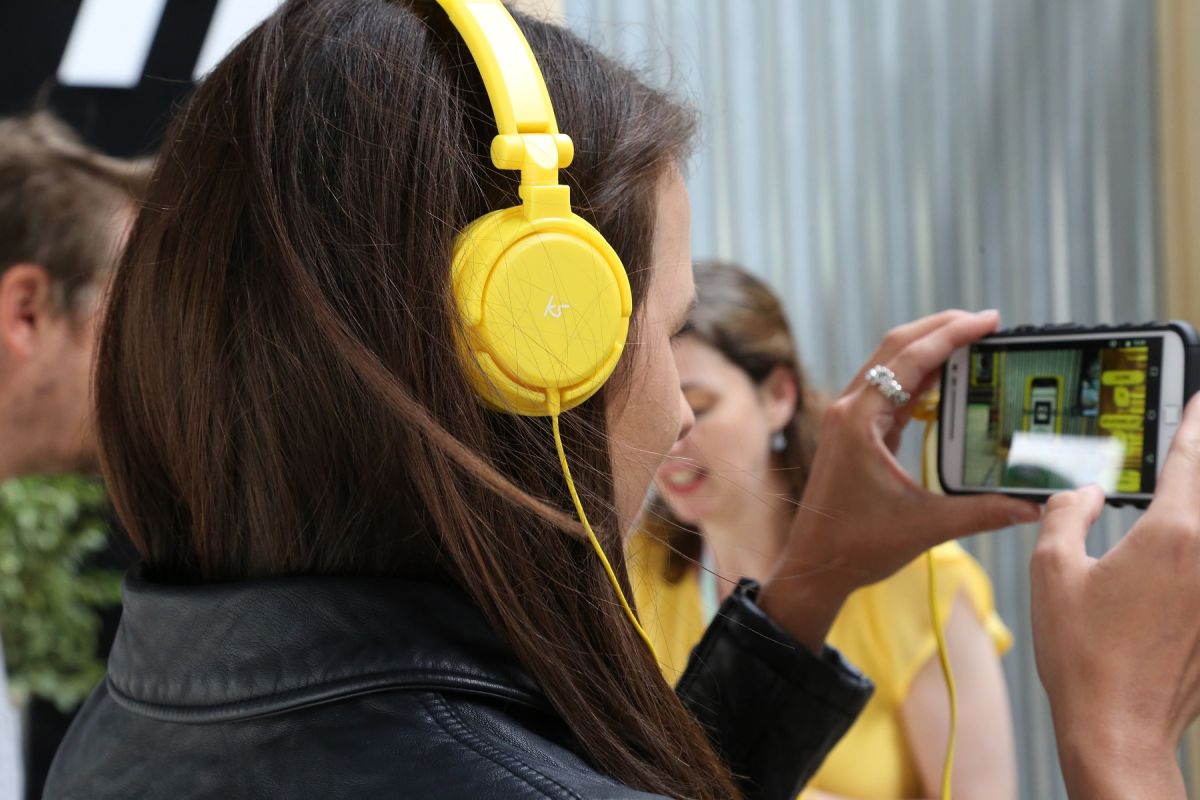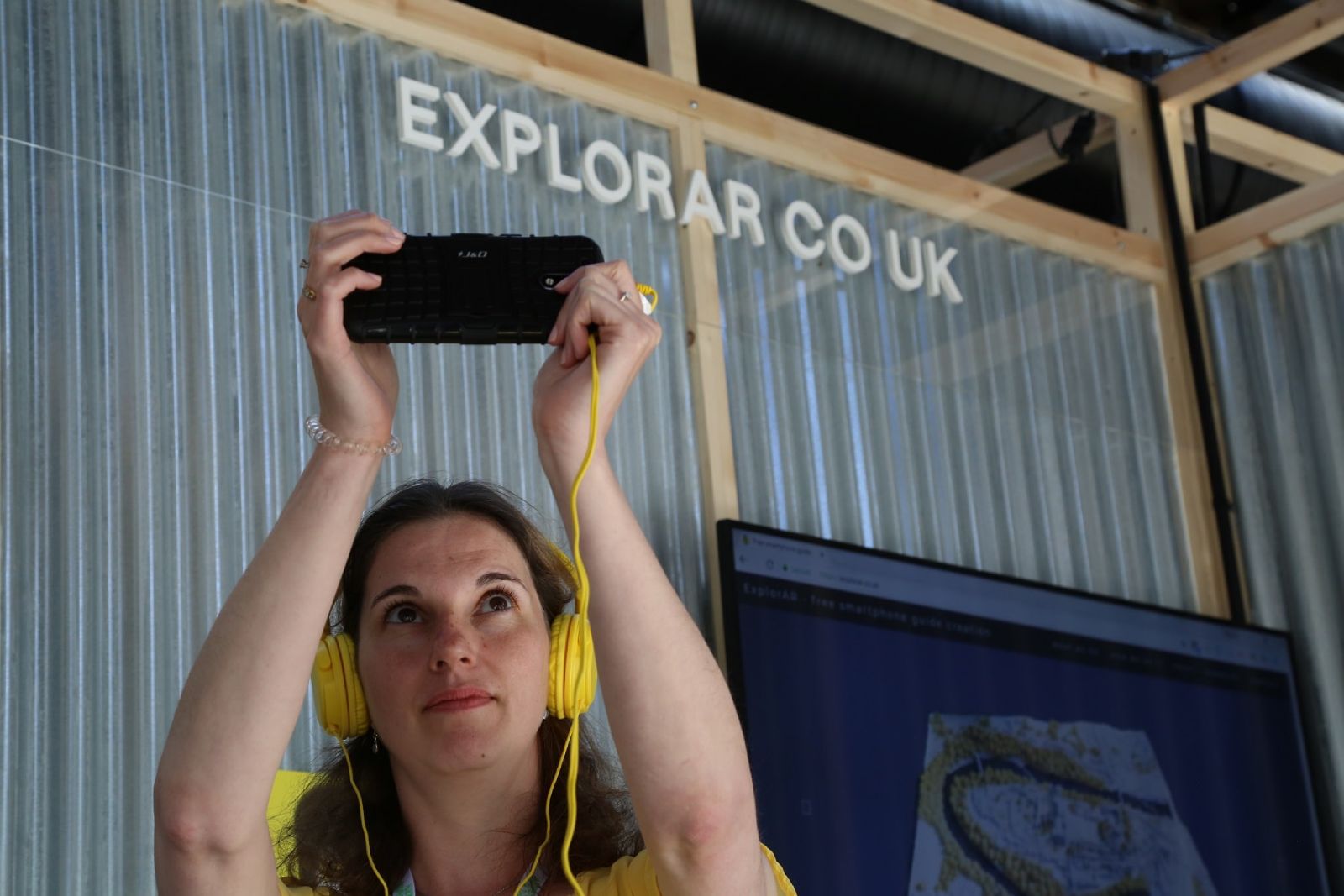It may seem odd that, as the owner of a digital heritage company specialising in creating immersive experiences for heritage sites and museums, I’m writing an article advocating hanging back from the very bleeding edge of technology.
Augmented reality and virtual reality are awesome, yeah? Surely I should be bending the ear of every museum that will listen, evangelising about the wow factor that ARCore and ARKit can bring to your heritage site, stunning visitors with experiences they’ve never seen before? Well, kind of – I’m certainly a virtual reality and augmented reality evangelist, and I love using the unique possibilities digital technology can bring, whether it’s 360 panoramas for heritage sites or heritage 3D modelling to bring museum artefacts to life. But there’s more to it than jumping on the bandwagon of every new technological release.

Reading through the Twitter thread for Museum Hour’s discussion on creating museum interactives, several common ideas emerged. First the positives: museum interactives could provide fun, interaction (such as visitors giving responses or designing something), and providing something no other medium can. The last point is particularly important and too often I see digital content that simply replicates a paper version rather than making the most of the unique benefits digital brings.Museum Hour highlighted plenty of pitfalls with museum interactives, however: vast expense on a limited budget, being high maintenance/laggy, breaking and providing a bad user experience, and causing exclusion by requiring visitors to have a particular smartphone or digital knowledge. I’ve seen plenty of great technology being used in all sorts of locations; especially at conferences and meetups, people are desperate to show off the bespoke, cutting edge content that an augmented reality software company has produced for them at great expense. They’re certainly pretty, and quite impressive – the first couple of times you see it, at least. But it also comes with a large number of problems. I’ll take a look at each of the potential problems with museum digital experiences and then, in part two, I’ll see what possible solutions there might be that allow you to provide a great museum digital user experience.

LIFESPAN
Firstly, if you’re buying into the forefront of tech design for your museum, it also means it’s likely to go out of date quickly. It also means you’re probably paying through the nose for it, which begs a question – does it genuinely add something to the visitor experience, or is it relying on the wow factor of something new? If it’s the latter, then take it from me: once you’ve seen an augmented reality Roman pot that you can place on a real world table and walk around it, there’s only a certain number of times you can have a similar experience thrust into your hands before you start taking it for granted. After all, don’t forget that Wifi once seemed like a game-changing unattainable vision for the future. Now I think I’m living in a Third World country if a venue doesn’t provide it. And who bought the first Apple Watch thinking it would take a long time to be superseded?
COST
It also means cost. Big cost. Contact most software companies asking for an app and you won’t be walking away with much change from £20,000. Add in some bespoke virtual reality or augmented reality, and you can probably double that. (on a side note, in most cases ExplorAR won’t charge heritage sites and museums for producing smartphone apps and tours and base it on revenue share instead. But I promised myself this blog post wouldn’t be an infommercial…). Given the other problems that cutting edge museum interactives might encounter, is this the best use of your limited budget and grant applications?
Digital content can be effective if it offers something unique:
RELIABILITY
This falls into two areas: well, three areas if you’re splitting hairs. How easy it is for people to understand and navigate? Is the technology itself reliable? And how easy is it for people to hack and destroy?
When technology really is brand new, then you can no longer rely on visitors having a prior understanding based on seeing previous similar experiences – a ‘learned intuition’, as it were. Most people have seen enough touchscreens in museums that they know the screen is likely to be interactive; that you start the experience by tapping the screen to wake it; and that you can usually tap on titles and images to learn more.
Even if they are presented with a new layout, they have seen enough touchscreens to have got over another factor: their technological fear. This is something I learned early on and is a greater barrier to take-up than you might think. Some people will simply be scared to use new technology and will not have the confidence to try something new. In extreme cases, I’ve even seen people physically shy away from a proffered smartphone, petrified of touching it as though they might be infected by its technology.
If you’re tech savvy, then you’re happy pressing buttons to see what happens. You probably also have that ‘learned intuition’ of how digital menus work and can make educated guesses when presented with new systems. However, you cannot rely on everyone being like you. Don’t forget that this also applies to your staff or volunteers. If the technology is too complex, or they feel intimidated by it, then they are unlikely to be able to either fix things when they go wrong, or help visitors when they get stuck. Either way, it’s a bad user experience, and potentially expensive if you have to call out a specialist.
In terms of the technology itself, then there could also potentially be reliability issues here as well. These could be compatibility issues (either limited compatibility with existing hardware or uncaught bugs), programming issues especially for new technologies and, to a lesser extent, bugs in the software itself.
The third issue is accidental or malicious problems caused by users. Is the technology able to handle the volume of use it will get? Has every combination of button pushes, scenarios and menu navigation been tested? No software survives first contact with users, because they never use it the way you expect. The other side is malicious use. I remember speaking to the head of visitor experience at one museum, who said a recurring problem was people hacking the touchscreens and either crashing them or locking them. Is there a plan in place if something goes wrong?
EXCLUSION
The other problem – which for me is one of the greatest concerns – is that if your shiny new museum digital experience relies on visitors using their own smartphones and tablets, then it’s unlikely that the latest, bleeding edge museum interactive will work on many people’s devices. ARCore (Android) and ARKit (iOS) are impressive, offering augmented reality interactions and realtime analysis of 3D space to enable placing of items in real world locations. But if your content is based on one of these technologies then it’s only going to be available to a small proportion of visitors, simply because they require certain (very expensive) smartphones to run them. So you need to ask: are the benefits of being on the bleeding edge of technology outweighed by the potential problems? Is it worth sitting a few paces back and implementing tried, tested and widely available technology instead?
In part two, I’ll take a look at some of the potential solutions museums and heritage sites can implement to mitigate these problems with museum digital experiences.
